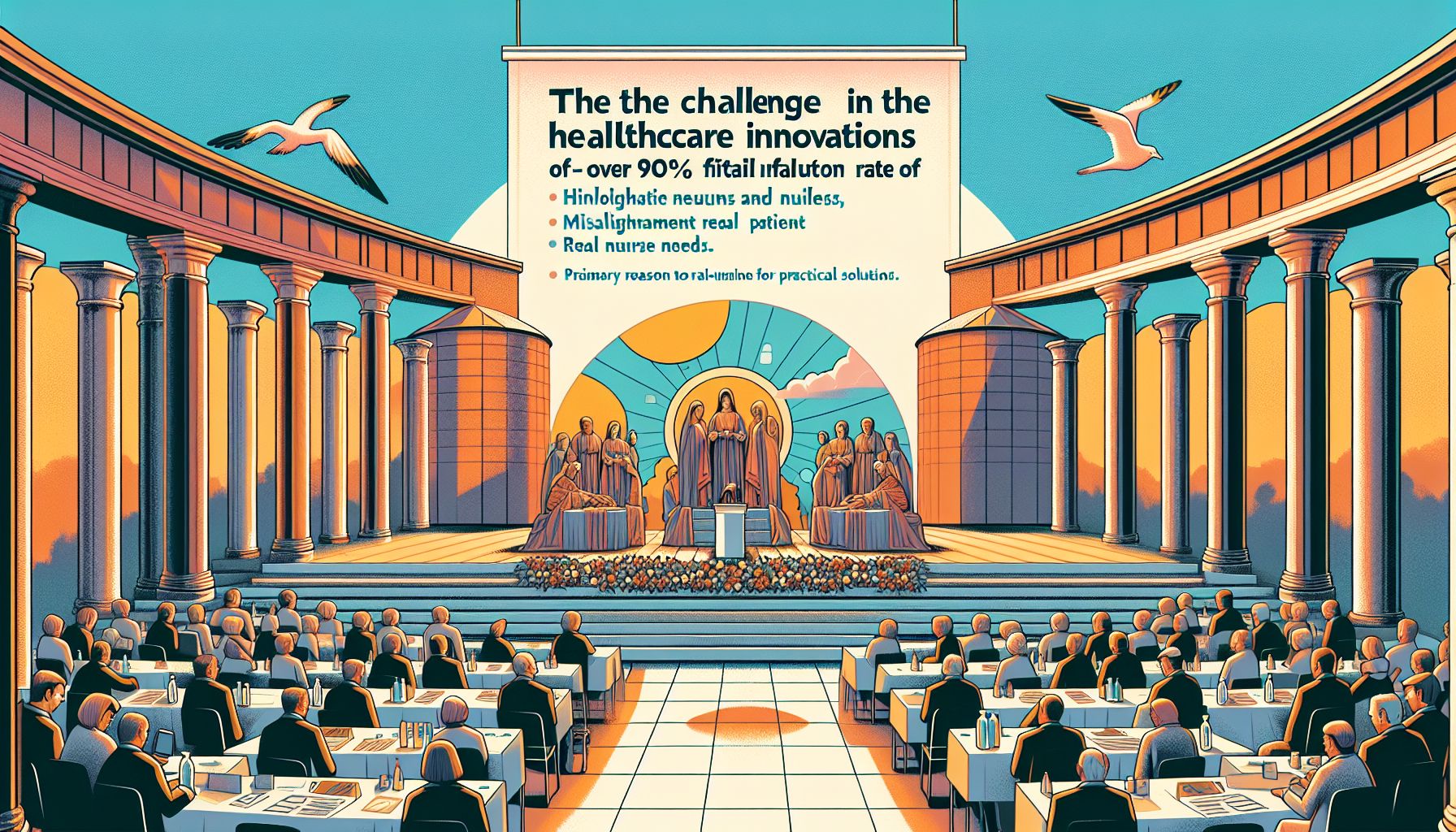The Challenge Behind the 90% Failure Rate of Healthcare Innovations

Maastricht, Tuesday, 4 February 2025.
At a recent conference, experts highlighted that over 90% of healthcare innovations fail due to misalignment with real patient and nurse needs, stressing the need for practical solutions.
The Healthcare Innovation Crisis
At the ICT&Health conference in Maastricht on January 29, 2025, healthcare innovation strategist Lucien Engelen highlighted a critical issue facing the healthtech sector: the overwhelming majority of innovations never reach their intended users [1]. The primary reason for this high failure rate, according to Engelen, is that most innovations aren’t sufficiently focused on their key stakeholders - patients and nurses [1][2]. This challenge is particularly concerning given that the healthcare sector is experiencing significant workforce pressures, with the Netherlands seeing a 41 percent decline in nursing school applications over the past five years [4].
Education and Technology Gap
Maurice Magnée, healthcare innovation lecturer at HAN University and founder of iXperium Health, identifies another crucial barrier: the technological readiness of healthcare professionals [1]. According to Magnée, many recent healthcare graduates struggle with new technological applications due to traditional training approaches [1]. However, he emphasizes that technology, including AI, should be viewed as an enabler rather than a threat to healthcare jobs [1][2].
Innovative Solutions Showcase
The conference highlighted several promising healthcare innovations addressing real-world challenges [1]. These included SafetyTracer’s location-detection alarm system for elderly care, Sananet’s digital coaching platform, and Maastricht UMC+’s AI visualizations through their Prosper Innovation Lab [1]. Chief Nursing Officer Marjolein Heemels of MUMC+ emphasized that successful healthcare innovation must place nurses at its core [3], implementing a six-pillar strategy focusing on leadership, innovation, and professional governance.
Future Directions
The path forward requires a fundamental shift in how healthcare innovations are developed and implemented. Rebecca Love, a keynote speaker at the conference, highlighted the importance of empowering nurses to lead innovation efforts [4]. The emphasis is now on creating solutions that address genuine healthcare challenges while ensuring proper training and integration with existing healthcare workflows [1][3]. This approach aligns with the growing recognition that successful healthcare transformation requires both technological advancement and human-centered design [3][4].

